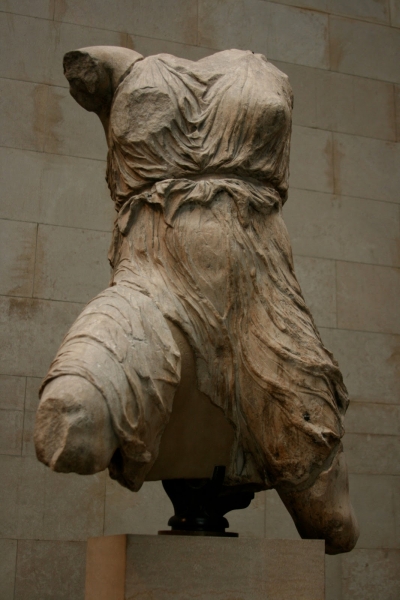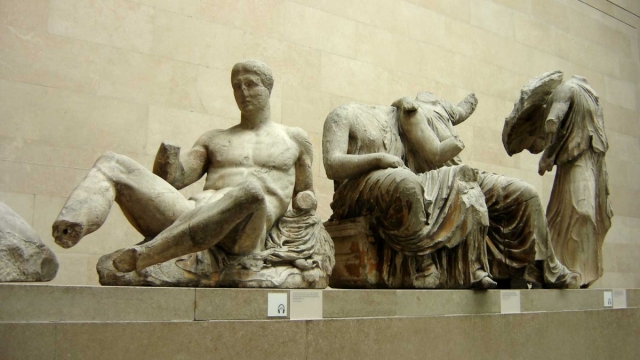Anastasia Balezdrova
Trafficking of archaeological objects is one of the most lucrative illicit activities worldwide. The repatriation of cultural objects to the countries from which they had been stolen was the focus of the third international expert conference, which began in Athens on Wednesday.
"Depriving a country of its monuments by force is an act against its identity. Cooperation on the part of all countries is required in order to protect the cultural heritage from being seized," Maria Andreadaki - Vlazaki, Director of the General Directorate of Ancient and Cultural Heritage of the Greek Ministry of Culture and Sport, said in her speech.
She stated that this worldwide protection network aims at reducing the interest in exhibits acquired by dubious means rather than at emptying the major museums. She gave as an example of such cooperation the agreement signed by the Getty Museum in New York, which obliges it to investigate whether its exhibits have been legally acquired. "In this way the museum has returned several exhibits to Greece in exchange for exhibitions of antiquities," she said.
Greece has already signed cooperation agreements with countries like the USA and China, and framework agreements with neighbouring countries, including Bulgaria. According to the archaeologist, the cooperation is fruitful since in 2011, during pan-European training, the Swiss authorities were able to confiscate 118 ancient coins and to return them to Greece. Most recently, a Neolithic figure possessed by an illegal dealer in works of art in the USA has been returned as well.
The expert noted that, in the majority of the cases, the public opinion is on the side of the law. Indicative of this is the decision of a German citizen to return to Greece a number of items that his father had illegally taken from an Aegean island during World War II. Similarly, a large number of tourists from different countries who had visited the Parthenon in the past and had taken souvenir pieces of marble with them have returned them, stating in their letters that they want to contribute towards the reunification of the monument.

As expected the dispute about the sculptures seized before the liberation of Greece, which are in the British Museum today, was the main topic of discussion during the first session of the conference, which involved chairman of the British Committee for the Reunification of the Parthenon Marbles, Eddie O'Hara. He presented the history of the case from the outset as well as some arguments in support of the campaign.
As pointed out, half of the frieze of the Parthenon, 80 metres in length, is in the British Museum, 50 metres of it are in the Acropolis Museum and 2 metres are in the Louvre. "Elgin's collection consists of 92 items. 90 are from the Parthenon and the other two include a caryatid and a column from the Erechtheum for which he had requested 62,400 pounds but the government had replied that it could pay 30,000 pounds. In 1816, the Committee evaluated the collection at 36,000 pounds. I must emphasize that those were huge amounts at the time."
 The chairman of the British Committee, which was established 30 years ago, said that one of the main arguments against the return of the marbles to Greece could be refuted. "This is the so-called "floodgates argument", which is supported mostly by the museums from the Bizot Group, which involves the British Museum and the Louvre. It states that if the marbles were returned this would give rise to a wave of requests for the repatriation of exhibits and the museums would be emptied. The argument can be refuted by claiming that the marbles are not independent exhibits but part of the Parthenon, which is recognized as a World Cultural Heritage by UNESCO, making it a quite unique and isolated case from the others," said O'Hara.
The chairman of the British Committee, which was established 30 years ago, said that one of the main arguments against the return of the marbles to Greece could be refuted. "This is the so-called "floodgates argument", which is supported mostly by the museums from the Bizot Group, which involves the British Museum and the Louvre. It states that if the marbles were returned this would give rise to a wave of requests for the repatriation of exhibits and the museums would be emptied. The argument can be refuted by claiming that the marbles are not independent exhibits but part of the Parthenon, which is recognized as a World Cultural Heritage by UNESCO, making it a quite unique and isolated case from the others," said O'Hara.
Representatives of the Greek Consultative Committee for the Parthenon Marbles, Elena Korka and Irini Stamatoudi, stressed that recent research proves that Lord Elgin was well aware that his actions were unlawful.
"The Italian version of the royal decree of the Sultan mayor of Athens, which Elgin had presented by way of permission to dislodge and take the marbles to the UK described them as "a number of stones with inscriptions and engravings," they said, pointing out that the museums in the Vatican, Palermo and Heidelberg have already responded to the Greek request and have returned the pieces of marble to Athens.
During the conference it became clear that the Greek request for the return of the marbles to Athens in order for them to be placed in the missing areas of the Acropolis Museum has been under the auspices of UNESCO. "The campaign has been resumed after the meeting of Minister of Culture and Sports Panos Panagiotopoulos with UNESCO Director General Irina Bokova in Paris at the end of July. In early August, the official request of the Greek government was sent by the international organization to the ministers of foreign affairs and culture in the UK and to the director of the British Museum," the experts announced.

They shared the view that an exhibit can obtain a meaning and significance only in the environment in which it has been created and as part of the complete composition to which it belongs.
The conference continues in Ancient Olympia until Friday.